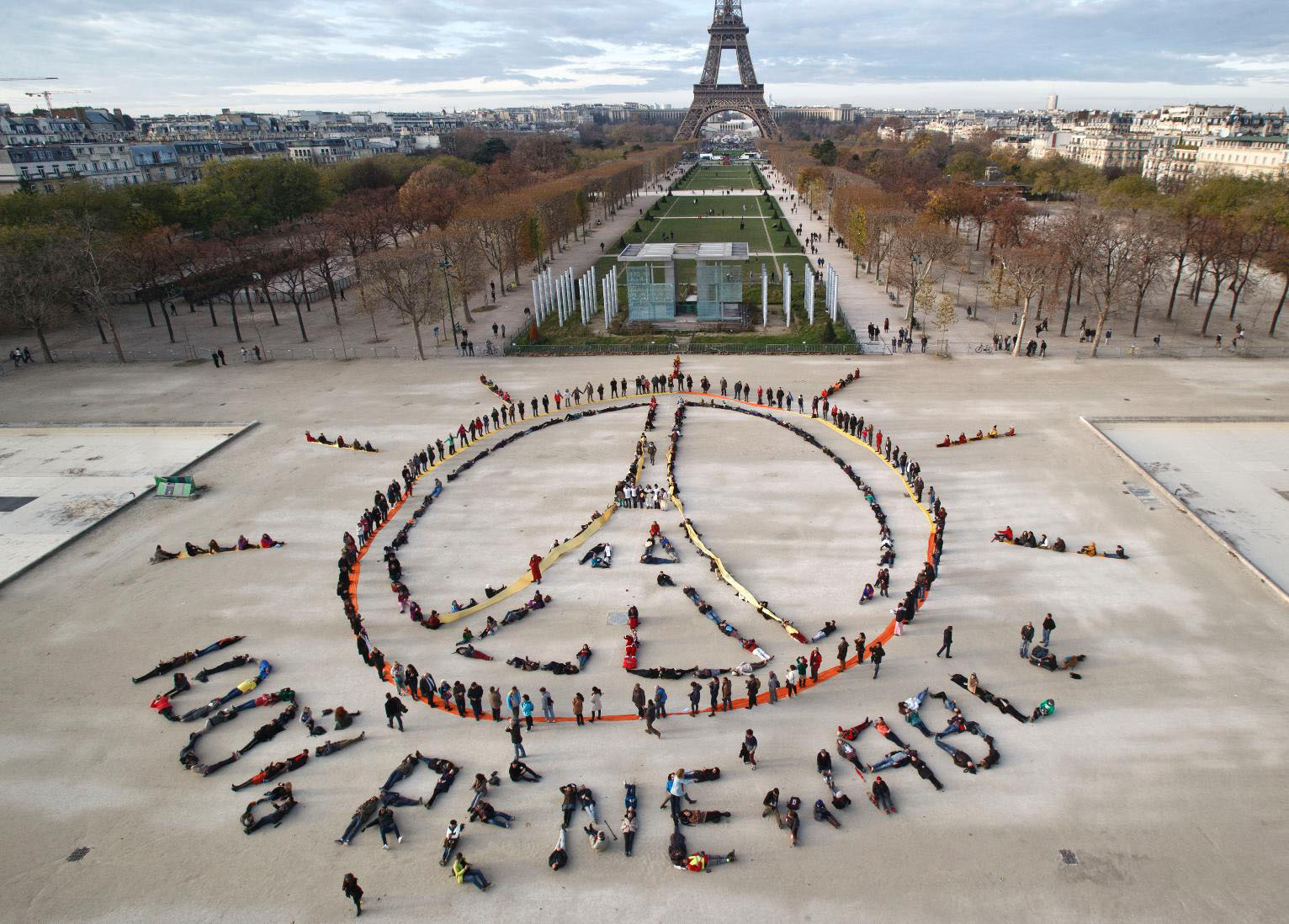The Paris Accords |
The Paris AccordHow it Affects Climite Change |

"The Paris Agreement (French: Accord de Paris) is an agreement within the United Nations Framework Convention on Climate Change (UNFCCC) dealing with greenhouse gas emissions mitigation, adaptation and finance starting in the year 2020. The language of the agreement was negotiated by representatives of 195 countries at the 21st Conference of the Parties of the UNFCCC in Paris and adopted by consensus on 12 December 2015. As of June 2017, 195 UNFCCC members have signed the agreement, 148 of which have ratified it. In the Paris Agreement, each country determines its own contribution it should make in order to mitigate global warming. There is no mechanism to force a country to set a specific target by a specific date. On 1 June 2017, U.S. President Donald Trump announced that the United States would withdraw from the agreement and seek a new deal. In a joint statement, France, Germany and Italy rejected the American call to reopen climate talks and 3 U.S. states joined the United States Climate Alliance in response (another 7 are in talks to join). The aim of the convention is described in Article 2, "enhancing the implementation" of the UNFCCC through: "(a) Holding the increase in the global average temperature to well below 2 °C above pre-industrial levels and to pursue efforts to limit the temperature increase to 1.5 °C above pre-industrial levels, recognizing that this would significantly reduce the risks and impacts of climate change; (b) Increasing the ability to adapt to the adverse impacts of climate change and foster climate resilience and low greenhouse gas emissions development, in a manner that does not threaten food production; (c) Making finance flows consistent with a pathway towards low greenhouse gas emissions and climate-resilient development." Countries furthermore aim to reach "global peaking of greenhouse gas emissions as soon as possible". The agreement has been described as an incentive for and driver of fossil fuel divestment. The Paris deal is the world's first comprehensive climate agreement. The contributions that each individual country should make in order to achieve the worldwide goal are determined by all countries individually and called "nationally determined contributions" (NDCs).[5] Article 3 requires them to be "ambitious", "represent a progression over time" and set "with the view to achieving the purpose of this Agreement". The contributions should be reported every five years and are to be registered by the UNFCCC Secretariat.[15] Each further ambition should be more ambitious than the previous one, known as the principle of 'progression'.[16] Countries can cooperate and pool their nationally determined contributions. The Intended Nationally Determined Contributions pledged during the 2015 Climate Change Conference serve—unless provided otherwise—as the initial Nationally determined contribution. The level of NDCs set by each country[7] will set that country's targets. However the 'contributions' themselves are not binding as a matter of international law, as they lack the specificity, normative character, or obligatory language necessary to create binding norms.[17] Furthermore, there will be no mechanism to force[6] a country to set a target in their NDC by a specific date and no enforcement if a set target in an NDC is not met.[7][18] There will be only a "name and shame" system[19] or as János Pásztor, the U.N. assistant secretary-general on climate change, told CBS News (US), a "name and encourage" plan.[20] As the agreement provides no consequences if countries do not meet their commitments, consensus of this kind is fragile. A trickle of nations exiting the agreement may trigger the withdrawal of more governments, bringing about a total collapse of the agreement.[21] The negotiators of the Agreement however stated that the NDCs and the 2 °C reduction target were insufficient, instead, a 1.5 °C target is required, noting "with concern that the estimated aggregate greenhouse gas emission levels in 2025 and 2030 resulting from the intended nationally determined contributions do not fall within least-cost 2 ̊C scenarios but rather lead to a projected level of 55 gigatonnes in 2030", and recognizing furthermore "that much greater emission reduction efforts will be required in order to hold the increase in the global average temperature to below 2 ̊C by reducing emissions to 40 gigatonnes or to 1.5 ̊C".[22] Although not the sustained temperatures over the long term to which the Agreement addresses, in the first half of 2016 average temperatures were about 1.3 °C (2.3 degrees Fahrenheit) above the average in 1880, when global record-keeping began.[23] When the agreement achieved enough signatures to cross the threshold on 5 October 2016, US President Barack Obama claimed that "Even if we meet every target, we will only get to part of where we need to go," and that "This agreement will help delay or avoid some of the worse consequences of climate change will help other nations ratchet down their emissions over time."[24]" - Wikipedia |
